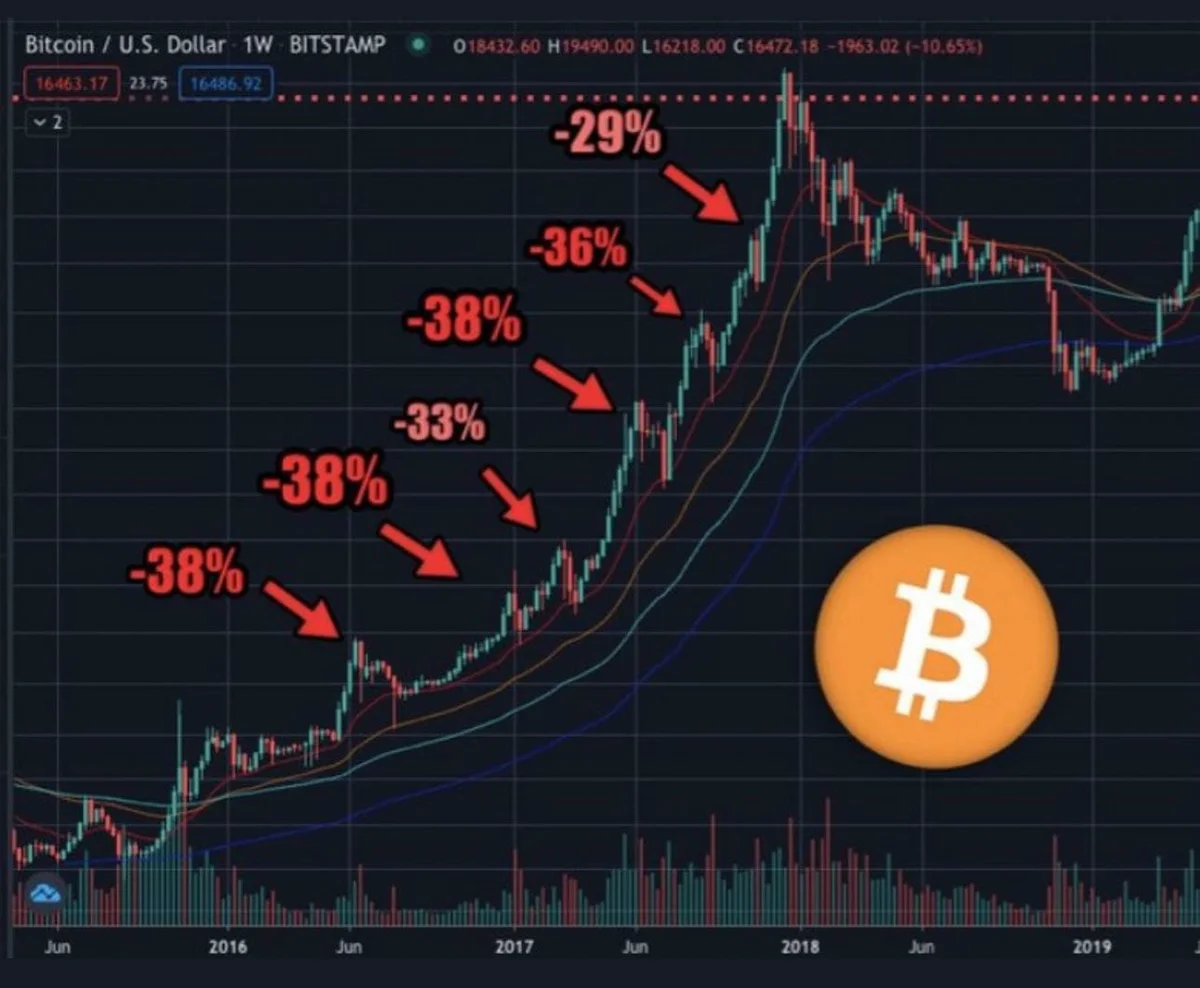
Bitcoin (BTC), the world’s largest cryptocurrency, recently encountered a 13% correction after reaching a peak of $49K last week. While this dip might have startled some investors, those familiar with the cryptocurrency market are well aware of its characteristic volatility.
One must understand that corrections are not uncommon in BTC’s history, especially during significant bull runs. In previous cycles, we observed multiple corrections ranging from 30% to 40%. These fluctuations are a part of the crypto landscape and must be approached with the right mindset.
The cryptocurrency market is renowned for its wild price swings, and Bitcoin takes the lead in this regard. Its value can skyrocket within a short period, only to undergo a sudden drop shortly after. This rollercoaster ride can be exhilarating, but it can also test the nerves of investors.
Experienced crypto enthusiasts recognize that these corrections are a normal part of market behavior. They understand the importance of staying calm and focusing on the bigger picture. While a 13% correction may seem significant, it is just a blip on the radar for those who comprehend the nature of crypto trading.
It is crucial to remember that cryptocurrencies are still a relatively new asset class. Their decentralized and digital nature, along with a limited supply, contribute to the extreme price fluctuations. Moreover, factors such as global events, regulatory developments, and market sentiment can influence their volatility.
Investors entering the crypto market must possess a certain level of risk tolerance. If a 13% correction creates panic or distress, it may indicate that this market is not suitable for one’s risk appetite. Cryptocurrency investments require a long-term perspective, as the short-term fluctuations are often insignificant in the grand scheme of things.
For those willing to navigate the uncertain waters of the crypto market, corrections should be seen as opportunities rather than setbacks. Buying the dip has been a successful strategy for many investors, capitalizing on the market’s cyclical nature and long-term upward trajectory.
Diversification is another important aspect to consider when dealing with cryptocurrency investments. Allocating resources across different cryptocurrencies and even traditional assets can help mitigate risks and reduce exposure to market volatility. A well-balanced portfolio allows individuals to lower the impact of any particular asset’s correction on their overall investment.
Lastly, education plays a vital role in navigating the crypto market successfully. Staying informed about the latest trends, technological advancements, and regulatory developments helps investors make more informed decisions. Additionally, seeking guidance from experienced professionals or participating in online communities can provide valuable insights and support.
In conclusion, BTC’s recent correction is nothing out of the ordinary in the cryptocurrency market. The inherent volatility of crypto assets is well-known, and corrections are an expected part of the journey. By understanding this volatility, having appropriate risk tolerance, diversifying investments, and staying informed, investors can withstand and even capitalize on these price fluctuations.
